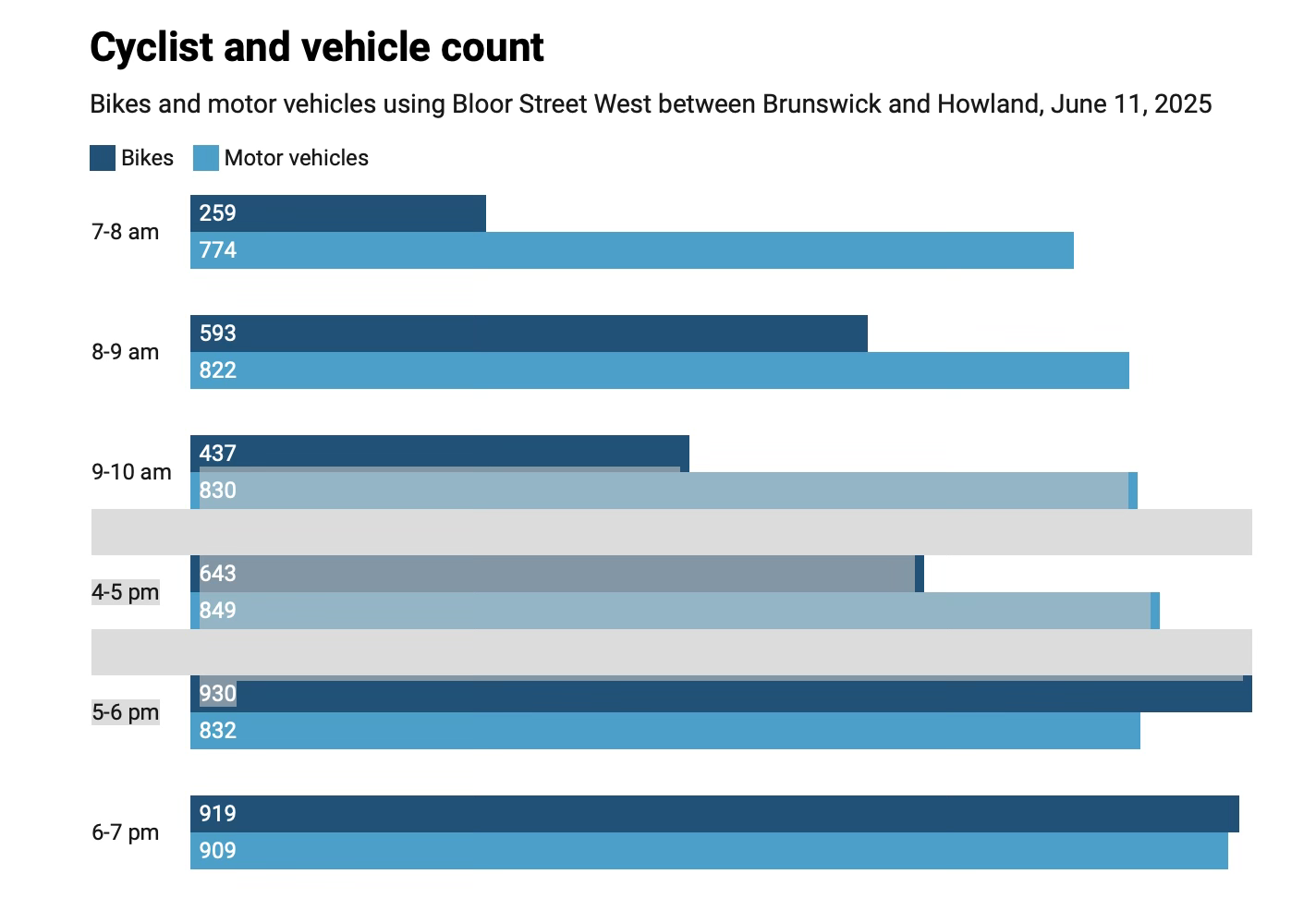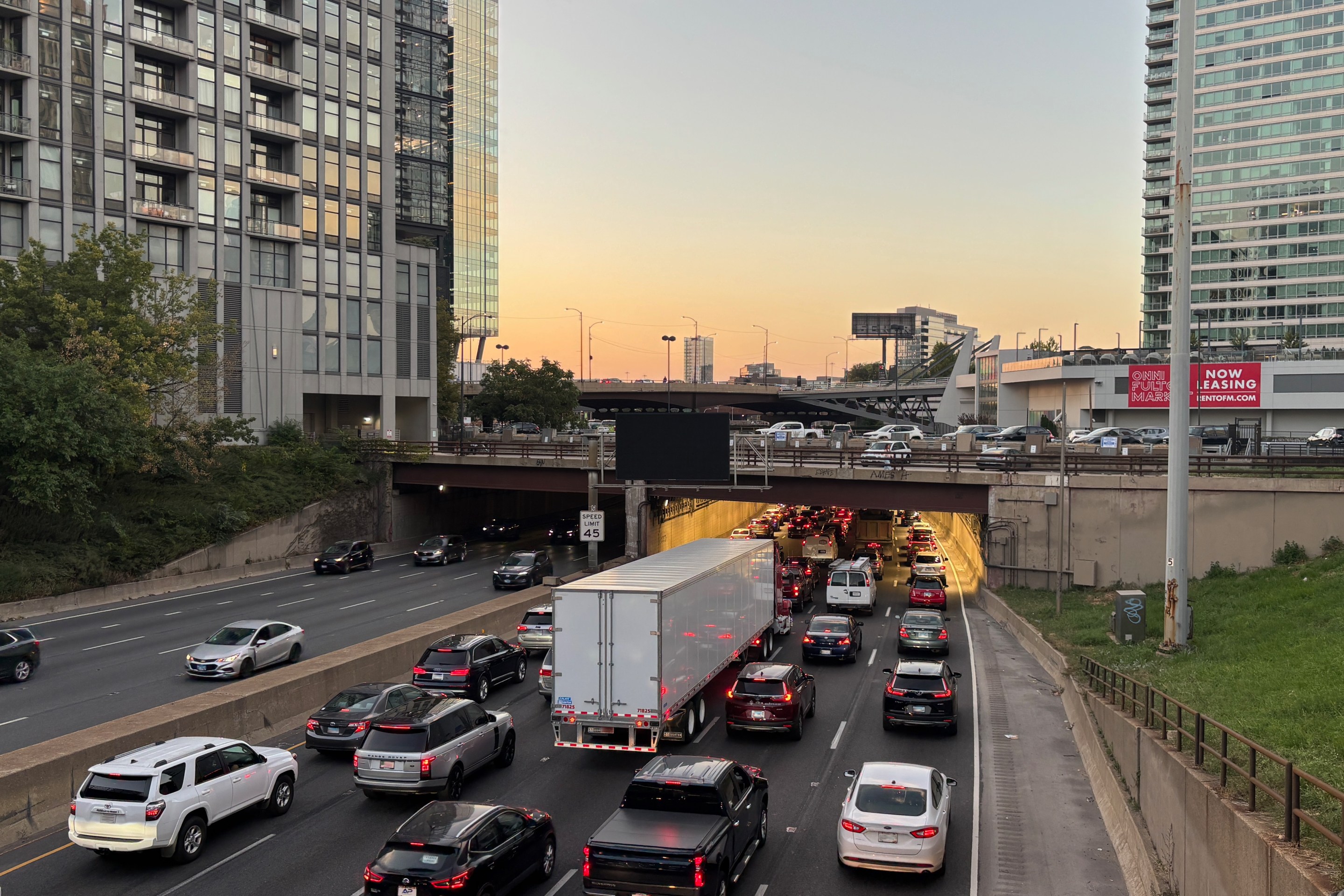Editor's note: Happy Canada Day! A version of this article originally appeared on Carbon Upfront.
Two studies recently dropped which should give politicians like Ontario Premier Doug Ford something to think about — if he could think.
One is very local: a traffic count in Toronto’s Bloor Street bike lane, which he intends to rip out because he claims it causes traffic congestion and slows his drive to the office. (See Doug Ford will have blood on his hands if he rips out Toronto bike lanes)
On June 11, the Toronto Community Bikeways Coalition set up cameras on the second floor of Curbside Cycle and counted every vehicle that passed over an imaginary line in the road during peak travel times. While Doug Ford claims that only 1.2 percent of Torontonians commute by bike, the study showed that during the afternoon rush hours, bikes, including e-bikes and other micro mobility devices, represented over 50% of all vehicular traffic.

“The upward trend for cycling continues in our city, as it does elsewhere when bike lanes are in place,” said Albert Koehl, Coordinator at Community Bikeways in a press release. “What’s especially impressive is that during the 5-7 p.m. rush hours, there were more bikes than cars, even though only a fraction of the roadway is actually set aside for cyclists. We are again seeing the importance of bike lanes for city residents on their way to work or school, to shop, or to go to appointments and meetings.”
The study discusses the problems of e-bike legislation in Ontario, which I have discussed previously, noting that 20 percent of the traffic in the bike lanes was from big electric scooter/ moped type bikes with throttles and decorative pedals.
“Officially, e-bikes that can be operated without pedalling are not allowed by city by-laws in protected bike lanes, such as on the south side of Bloor, however, our objective was to determine bike lane usage without having to make judgments about who should and should not be in the bike lane.”
I make judgements every day: these scooters are too big and too fast and shouldn’t be in the bike lanes. No doubt, all the bike lane haters are making judgments about this study, yelling TRY COUNTING THE BIKES IN FEBRUARY! However, my daughter and I use this bike lane in February, and when it is properly cleared, it is well-used. UPDATE: Albert Koehl advises that they staked out the same spot in February and counted over 2,000 cyclists per day.
Bilal Khan, who organized the count, notes, “Our 24-hour study showed more than 9,130 cyclists moved along Bloor St. at the count point. That is over 9,130 people not driving individual cars or on the TTC, helping to reduce pressure on those modes of transport while enjoying an affordable, healthy, noiseless, and climate-friendly way to get around.”
The other very international study reinforces Khan’s point. Titled Global health and climate benefits from walking and cycling infrastructure, " the study looked at how urban form and transport infrastructure affect walking and cycling rates in 11,587 cities from 121 countries across six continents.
“We also find positive effects of bicycle lanes (proxying for a wider array of street design practices) on both walking and cycling. In the median city, each new km of bicycle lanes is associated with ~13,400 additional km per year of bicycle travel. If every city increased the extent of its bicycle network to the level of Copenhagen, Denmark, our simulations indicate reductions in private vehicle emissions of ~6% and health benefits of ~US$435 billion per year.”

The study unsurprisingly finds that getting people out of cars and onto bikes significantly reduces emissions, and can happen a lot more quickly than switching to electric cars. The authors conclude:
“Our dataset highlights the role of bicycle lanes and paths, but other aspects of street design—sidewalks, safe crossings, and traffic calming measures such as raised intersections—are also important for active travel. The quality of the infrastructure is significant too: bicycle lanes that are protected by curbs or parked cars can attract cyclists of all ages and ability levels, while express bicycle networks such as those in Montreal provide higher design standards on key routes. Globally, 42% of households own a bicycle, and so the question for policymakers is how to encourage more usage rather than increase ownership.”
So here we are in a bizarro world where studies show how bike lanes dramatically increase the number of people riding bikes instead of driving, reducing pollution and fighting climate change, yet politicians all over North America want to tear them out or stop their expansion. They are all in thrall to the fossil fuel economy, which sees bikes as a problem, not a solution.
They continue to get elected because there are more car drivers than bike riders. But as a day in June on Toronto’s Bloor Street demonstrates, that can change.






